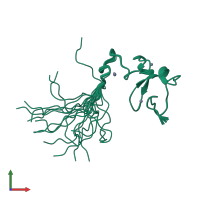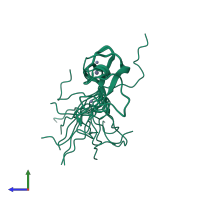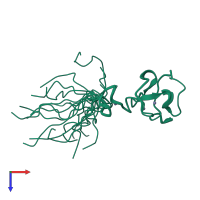Function and Biology Details
Reaction catalysed:
S-ubiquitinyl-[E2 ubiquitin-conjugating enzyme]-L-cysteine + [acceptor protein]-L-lysine = [E2 ubiquitin-conjugating enzyme]-L-cysteine + N(6)-ubiquitinyl-[acceptor protein]-L-lysine
Biochemical function:
- not assigned
Biological process:
- not assigned
Cellular component:
- not assigned
Structure analysis Details
Assembly composition:
monomeric (preferred)
Assembly name:
E3 ubiquitin-protein ligase UHRF2 (preferred)
PDBe Complex ID:
PDB-CPX-188676 (preferred)
Entry contents:
1 distinct polypeptide molecule
Macromolecule:





